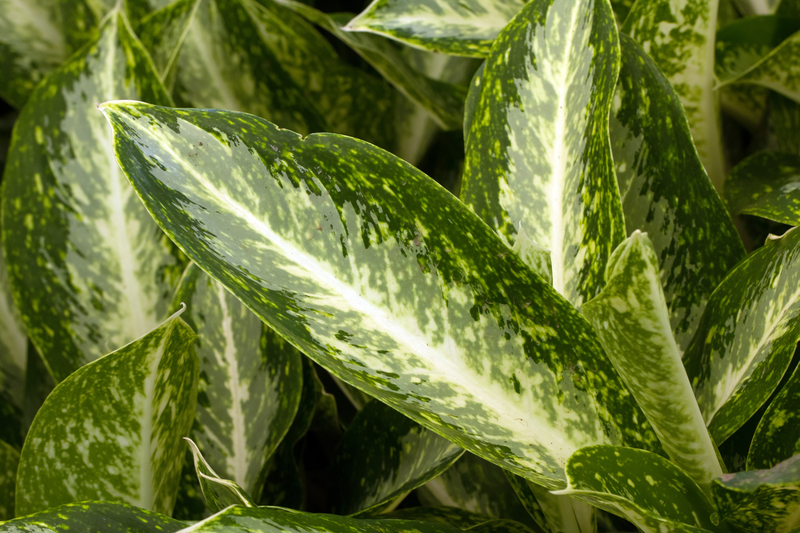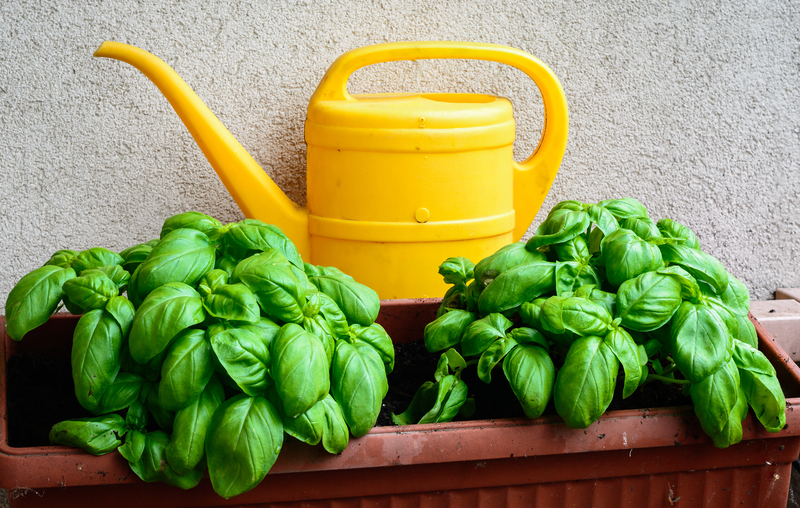Dog Lovers' Guide to a Bark-Friendly Garden
Posted on 18/08/2025
Dog Lovers' Guide to a Bark-Friendly Garden
Do you dream of a lush, vibrant backyard where your dog can safely play, relax, and explore? Creating a bark-friendly garden is every dog owner's ambition, yet achieving that perfect balance between a dog-friendly garden and an attractive outdoor space can be a challenge. Whether you have a playful puppy or a senior canine companion, with the right planning and design, your garden can become a pet paradise and a sanctuary for both you and your furry friend. This comprehensive guide covers everything a dog lover needs to know about designing, building, and maintaining a dog-safe, green, and enjoyable garden retreat.

Why Design a Dog-Friendly Garden?
Dogs are naturally curious, energetic creatures. They love digging, sniffing, running, and lounging outdoors. Unfortunately, not all gardens are automatically safe or suitable for canine companions. Some common landscaping choices can pose risks, while others encourage undesirable behaviors.
- Safety: Many popular garden plants and mulches are toxic to dogs. Unsafe fencing or materials can cause injuries or escapes.
- Practicality: Dogs have different needs than humans--a practical garden layout avoids muddy paw prints and trampled plants.
- Enrichment: Dogs thrive with mental and physical stimulation. A well-designed dog garden supports healthy activity and exploration.
By designing a space that caters to you and your four-legged friend, you create a haven that keeps everyone happy, healthy, and pawsitively content!
Key Principles for a Bark-Friendly Backyard
1. Fencing & Boundaries
Safety first--secure fencing is the foundation of a successful pet-friendly garden. Dogs are notorious escape artists, and no garden is dog-safe if your pooch can leap over or dig under barriers.
- Height matters: For large or athletic breeds, opt for fencing that is at least 6 feet tall.
- No gaps: Make sure there are no wide gaps or loose boards.
- Digging deterrents: Bury chicken wire, rocks, or concrete along the base of the fence to prevent digging outs.
- Gate security: Use self-closing, locked gates.
Bonus tip: Choose solid or privacy fencing to reduce barking triggered by passing distractions.
2. Avoiding Toxic & Harmful Plants
When planning your dog-safe outdoor space, remember that many common garden plants are highly toxic to dogs. Always avoid the following:
- Lilies
- Azaleas & rhododendrons
- Foxglove
- Daffodils, tulips, and hyacinths
- Sago palm
- Oleander
- Yew
- Ivy
Instead, opt for dog-friendly plants such as:
- Camellias
- Rosemary
- Sunflowers
- Marigolds
- Magnolia bushes
- Fuchsias
- Snapdragons
- Ornamental grasses
Always research new plantings before adding them to your garden!
3. Choose Dog-Resistant Plants
Energetic dogs may trample, dig, or chew vegetation, so prioritize hardy, robust species. Consider:
- Boxwoods
- Lavender
- Rugosa roses
- Bamboo
- Creeping juniper
- Salvia
These choices are not only tough, but many are also aromatic--masking pet odors and providing sensory enrichment.
4. Gentle, Durable Surfaces
Dogs love to run and play. Use surfaces that protect paws, resist wear, and are easy to clean. Options for a dog-friendly landscape include:
- Turf grass: Cool and comfortable, but choose drought-resistant or tough varieties.
- Artificial turf: Low maintenance and easy to clean, but ensure it doesn't get too hot in direct sunlight.
- Mulch: Avoid cocoa mulch (toxic), but cedar, pine, or rubber mulches are safer alternatives.
- Gravel or decomposed granite: Good drainage, but choose smooth stones to avoid paw injuries.
Tip: Avoid sharp stones, thorny plants, and spiky ground covers.
5. Designated Zones: Digging, Potty, and Play
Dogs are creatures of habit. Offering them dedicated spaces for various activities encourages polite garden behavior. Try:
- Digging pit: Fill with sand or soft soil, bury favorite toys, and reward digging here--not in your flower beds!
- Potty area: Use pea gravel, mulch, or artificial grass in a discreet spot for bathroom breaks. Train your dog to use only this space for easier clean-up.
- Shaded rest zones: Shade trees, covered patios, or doghouses provide spots to cool off on sunny days.
- Agility features: Add tunnels, ramps, or simple obstacles for canine fitness and mental stimulation.
Important Features for Your Bark-Friendly Garden
1. Water Features & Hydration
Freshwater access is crucial. Install dog-safe fountains, self-filling water bowls, or even a shallow splash pool. Ensure all water features are shallow to prevent drowning and are cleaned regularly to avoid bacteria.
- Raised bowls: Prevent debris and minimize spills.
- Puppy pools: Hard plastic models work well for dogs who love to splash!
2. Safe Shelter & Shade
Dogs can overheat quickly. Provide cool retreat spaces with:
- Trees and shrubs
- Canopies, pergolas, or shade sails
- Weatherproof doghouses
Bonus: Place beds or mats in these areas for extra comfort.
3. Paths & Adventure Trails
Canines enjoy exploring their territory. Create winding paths using pea gravel, bark, or paving stones. This allows dogs to patrol perimeters, satisfy their instincts, and burn energy without damaging lawns or beds.
- Looped trails: Great for high-energy dogs--add winding features for interest.
- Border patrol: Leave a margin along the fence so your dog feels like a security guard on duty!
4. Sensory Enrichment
A bark-friendly backyard goes beyond safety--it should also offer mental stimulation for your curious pup.
- Herb gardens: Plant rosemary, mint, and basil--edible and fragrant.
- Wind chimes & moving objects: Add gentle sounds and interactive features.
- Rotating toys: Keep things fresh by changing out outdoor toys often.
Dog-Proofing Your Existing Garden
For many dog lovers, a bark-friendly outdoor space means adapting existing gardens. Here's how to dog-proof your backyard for your canine companion:
- Remove hazards: Identify and eliminate toxic plants, sharp sticks, old wire, or forgotten chemicals.
- Reinforce fences: Repair holes and shore up weak spots.
- Re-route paths: Channel foot traffic away from delicate areas with clear paths or low barriers.
- Move delicate plants: Shift breakable blooms out of main play areas.
- Add mulch or ground cover: Protect worn or muddy patches.
Deterring Problem Behaviors
- Digging: Offer a dedicated digging spot and redirect your dog each time.
- Chewing: Provide durable outdoor toys and discourage chewing of sticks or patio furniture by spraying with safe, bitter-tasting deterrents.
- Muddy feet: Place mats by doors and clean paws with dog-friendly wipes before re-entry.
- Barking at passersby: Use privacy fencing or plant thick hedges to block views and reduce stimulus barking.
Seasonal Tips for a Dog-Loving Garden
Spring
- Thoroughly check for and remove any moldy mulch or dead plant material that could be harmful.
- Begin flea, tick, and pest prevention routines--many parasites awaken in early spring.
- Plant new safe species now for strong summer growth.
Summer
- Keep water bowls fresh and cool at all times.
- Double-check shade access.
- Watch for hot surfaces--paving and artificial turf can get scorching.
- Mind stinging insects, and check your garden for bee or wasp nests.
Autumn
- Rake and remove fallen leaves that may hide sticks or hazards.
- Be cautious with mushrooms, which can be toxic.
- Compost responsibly--some food scraps are toxic to dogs.
Winter
- Check salt and de-icers: many are toxic--pick pet-safe products.
- Provide sheltered outdoor access and remove ice patches.
- Maintain clear pathways for safe walks in snow or rain.
Top Dog-Friendly Garden Plants
- Dogwood (Cornus): Non-toxic and beautiful, providing dappled shade.
- Blueberry bushes: Edible for both pets and people.
- Marigold: Hardy, colorful, and safe.
- Bamboo: Fast-growing and excellent for privacy screening.
- Magnolia: Non-toxic, creates large, shade-filled areas.
- Sunflowers: A cheerful, dog-friendly addition.
Common Hazards to Avoid in a Bark-Friendly Garden
- Cocoa mulch: Contains theobromine, deadly to dogs.
- Pesticides, herbicides, and fertilizers: Only use pet-safe products, following package instructions strictly.
- Slug pellets and rat poisons: Must be kept out of all dog areas--use alternative pest controls.
- Sharp tools: Store safely away after gardening sessions.
- Standing water: Can harbor dangerous parasites and bacteria.

Dog-Friendly Garden Design Ideas
- Raised beds: Keep delicate plants out of reach.
- Pup paths: Winding routes around lawns or flower beds for high-traffic play.
- Agility courses: Homemade obstacles, jump bars, and tunnels are fun and stimulating.
- Interactive scent garden: Plant herbs and low shrubs with different textures and scents for sniffing enrichment.
- Water play: Add a shallow dog pool or sprinkler for warm days.
- Outdoor kennel or retreat: Provide your dog his own domain for safe relaxation.
Conclusion: The Joy of a Dog-Lover's Garden Sanctuary
Creating a bark-friendly garden is a labor of love that brings joy to both you and your canine companion. From thoughtful plant selection to engaging play zones and secure boundaries, every element of your pet-loving landscape can increase happiness and peace of mind. Prioritize safety, stimulation, and comfort, and you'll grow a backyard that supports a lifetime of wags, games, and sun-drenched naps.
Happy gardening, fellow dog lovers! May you and your furred friends enjoy a beautiful, harmonious outdoor space together.
Further Reading & Resources
- ASPCA List of Toxic & Non-Toxic Plants
- Humane Society: Safe Plants for Dogs
- RSPCA Advice: Dog-Friendly Gardens
Remember: Every dog and garden is unique. Observe, adapt, and experiment to discover the perfect bark-friendly backyard for your special four-legged friend!

